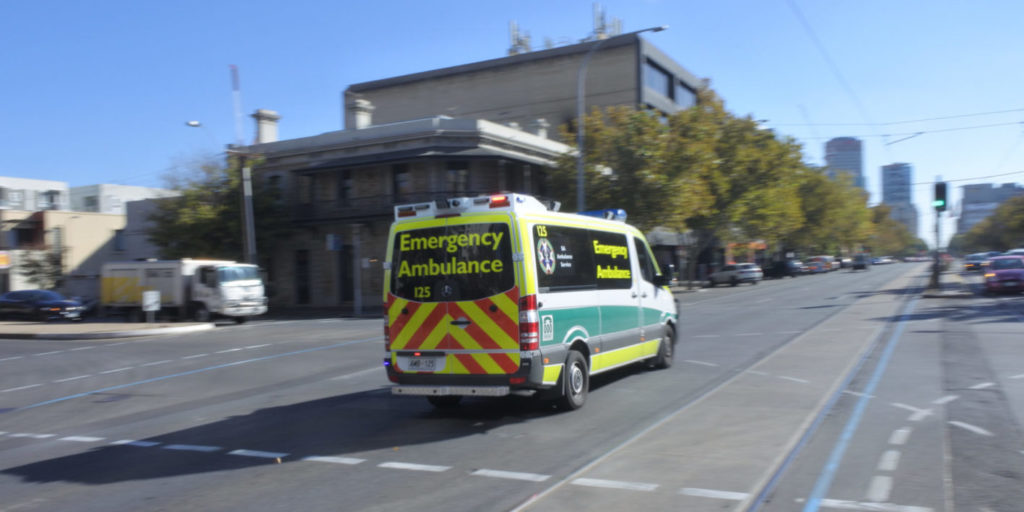Can I run a red to save a life?
Posted 22 October, 2020
Jeremy Rochow

Picture this: you’re sitting at a red light, traffic’s banked up, and you suddenly see flashing lights in your rear-view mirror.
A siren wails as vehicles behind you make a mad dash to get out of the way of an approaching ambulance.
What do you do? Do you run the red light or stay where you are?
This is one of many emergency situations that can leave motorists stumped. And in the face of flashing lights, it can be even harder to think clearly.
Here, we clear up the confusion and answer some other common emergency vehicle questions.

Motorists must attempt to move out the way of ambulances when their lights are flashing or sirens are on. Image: RAA
1. Can I run a red to save a life?
If you’re in a similar situation to the one mentioned above, you can legally pull into the intersection to let the emergency vehicle pass; however, it must be the only option available and you need to make sure it’s safe to do so.
If there’s a red-light camera, it’s probably going to take a snap of your number plate, but you can challenge the fine if an emergency service vehicle is visible in the photo.
If it’s not safe to drive into the intersection, remain stationary and the emergency vehicle will find a way around you. Alternatively, wait until the lights change to green, then move safely out of the way.
2. If an emergency vehicle is on the other side of the road, do I need to slow down?
Last year there was a 56% increase in drivers caught speeding past emergency vehicles, with 344 motorists caught breaking this rule, up from 219 the previous financial year.
You need to slow down to 25km/h when passing an emergency vehicle that has its lights flashing.
However, if you’re on the other side of the road and there’s a median strip – either raised or painted – between you and the emergency vehicle, you can continue at the normal speed limit.
If the road is only divided by a white line or no line at all, then you need to slow down.
Emergency vehicle offences
Speeding past an emergency vehicle can be costly, not to mention dangerous.
Exceeding the 25km/h zone speed limit by 1–9km/h could set you back $180 plus a $60 Victims of Crime Levy and 2 demerit points.
3. What should I do when an emergency vehicle is approaching from behind?
If you’re driving and see an emergency vehicle with its lights flashing and siren blaring coming up behind you, indicate, slow down and move out of the way when it’s safe to do so. This will make it easier for the emergency vehicle to pass.
 Picture this: you’re sitting at a red light, traffic’s banked up, and you suddenly see flashing lights in your rear-view mirror.
A siren wails as vehicles behind you make a mad dash to get out of the way of an approaching ambulance.
What do you do? Do you run the red light or stay where you are?
This is one of many emergency situations that can leave motorists stumped. And in the face of flashing lights, it can be even harder to think clearly.
Here, we clear up the confusion and answer some other common emergency vehicle questions.
Picture this: you’re sitting at a red light, traffic’s banked up, and you suddenly see flashing lights in your rear-view mirror.
A siren wails as vehicles behind you make a mad dash to get out of the way of an approaching ambulance.
What do you do? Do you run the red light or stay where you are?
This is one of many emergency situations that can leave motorists stumped. And in the face of flashing lights, it can be even harder to think clearly.
Here, we clear up the confusion and answer some other common emergency vehicle questions.


